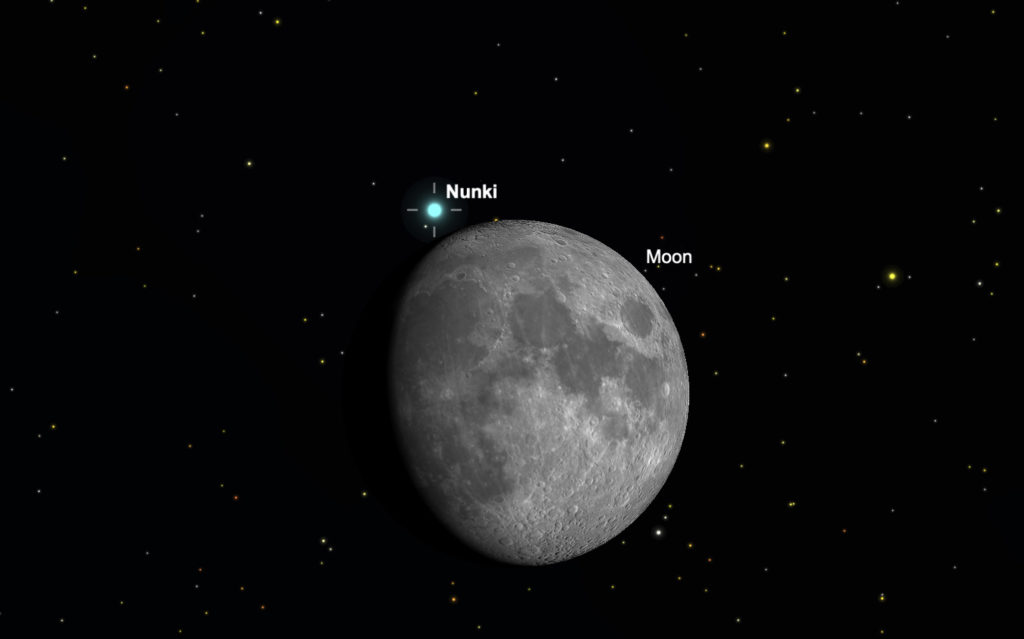Sky Report: August 16 – August 22

Nunki near the moon at 8:55 MDT as seen from Kanab; it’s similar for the entire Southwest USA. Graphic created with SkySafariAstronomy.com
You can see all three planets that are visible tonight at the same time around 9 p.m. Then Venus is about to set in the west while Jupiter and Saturn have recently risen in the southeast.
Venus is by far the brightest and it becomes visible in early evening twilight – or earlier if you know precisely where to look. Venus is so bright because it’s relatively close to both the earth and sun, and because it’s shrouded by highly reflective clouds. Venus is on the far side of the sun but it’s approaching earth.
Jupiter is almost half as bright as Venus so it too outshines all the stars. It’s huge, and like Venus it’s reflective, but it’s more distant from both the earth and sun. The attraction of Jupiter for people with even small telescopes are its four large moons which change position from night to night and hour to hour. Use an app like SkySafari to know which is which.
Saturn is to the right of Jupiter, and being much more distant is fainter, competing with the brightest stars. It’s celebrated for its rings, visible with a telescope capable of a magnification of at least 30 times.
Both Jupiter and Saturn are “in retrograde” – moving slowly westward against the distant stars – as the earth passes them on an inside orbit. From the 18th both are in Capricornus.
Here are two events for people with binoculars – and every stargazer needs binoculars! – or a small telescope:
There’s a very close conjunction of Mars and Mercury on Wednesday the 18th, but you won’t see it at night because they set so early – a shame because they’re separated by only 5 arcminutes (1/12°). Skilled observers might spot them in early twilight or even in daylight, 16° east of the sun. Mercury is brighter and lower than Mars. A few hours later on that same night the nearly-full moon passes extremely close to the bright star Nunki in Sagittarius. They’re closest between 8:40 and 9:10 p.m. MDT, and you can easily watch the moon glide past the star, just missing it by 1/30° as seen from Kanab. You’re seeing the moon’s normal orbital motion around the earth made sensible by passing near a star for reference. People farther north will see the star farther from the moon. At 230 light years Nunki is 6 billion times more distant than the moon.
Under a grant from the Utah Governor’s Office of Economic Development and the Kane County Office of Tourism, Stellar Vista Observatory offers portable telescopes and tripod mounted binocular kits on loan for free to all residents of Kane County. Nothing beats a quality binocular or astronomical telescope to enhance enjoyment of the night sky! Visit https://stellarvistaobservatory.org/discover-the-night-sky/ for full details.
The Sky Report is presented as a public service by the Stellar Vista Observatory, a nonprofit organization based in Kanab, Utah, which provides opportunities for people to observe, appreciate, and comprehend our starry night sky. Additional information is at www.stellarvistaobservatory.org. Send questions and comments to
John@StargazingAdventures.org.






Comments are closed.